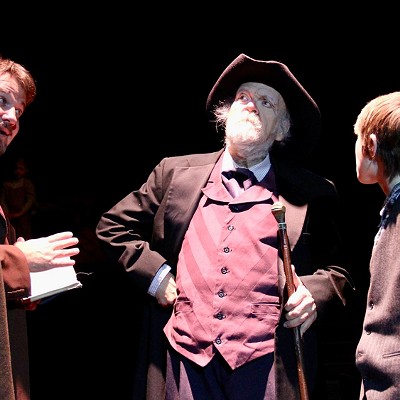
Streetcar ridership hit a peak in 1920, when 25.5 million trips were taken on the city’s three lines. That worked out to nearly 280 rides a year for every resident in the city.
The streetcar lines vanished in 1947, but a half a century later, the city is looking to slowly rebuild a rail-based transit system with plans for a downtown modern streetcar line.
“All this talk of a streetcar coming and whether or not to have the overhead wires, well, we had them at one time,” said Michael Scroggins, public information officer of METRO Transit, which oversees the city’s bus system and its 10,000 daily riders.
City leaders ripped up trolley tracks in the ’40s as a new era of bus service was used across the city.
Today’s talk about reducing car congestion is not new to OKC.
According to a city planning report from 1945, A Preliminary Report Upon the Major Street Plan, city planners were aware back then of the issues cars caused and the need to build an network of transit options.
“The use of the modern automobile has had a far-reaching impact on the urban community,” the report stated. “The early attempts of American cities to solve their growing problems of traffic congestion and to facilitate vehicular movement constituted one of the major stages in the development of comprehensive planning.”
Despite that realization, city leaders spent the next 50 years expanding OKC’s networks of roads and highways. But recently, city leaders have made a push to return to the city’s public transit roots.
“You see where we started as a city [in terms of transit], and it’s what we are looking to return to today,” Scroggins said. “We lost the system that we had, but hopefully we are going to get it back.”
The bus driver historian
Monty
Mortensen was a bus driver in the ’30s and ’40s, working for the city’s
transit system, which was called Oklahoma Railway Company at the time.
He
collected photos and newspaper clippings concerning public transit in
Oklahoma City from his days as a bus driver until his passing a couple
of years ago.
Last
year, city transit officials received a call from Mortensen’s daughter,
who said she had a box of her father’s archives and wanted to drop it
off.
What arrived was a capsule of historic artifacts about the city’s transit past.
“These were historic pieces that those of us who have been here a very long time have never seen,” Scroggins said.
Artifacts included a 1952 bus route map that looks awfully similar to today’s system.
“One
of the things that we always hear from riders is that our [bus]
schedules are so hard to read,” Scroggins said. “As you can see, it
doesn’t matter where you go or when it is; none of them are easy until
you just get in there.”
Mortensen’s
collection also included old transit tokens, advertisements for bus
service and transfer tickets that were used by riders in the ’40s.
“I’ve
never seen it collected like he’s done here,” Scroggins said. “He has
done a huge favor for the city and transit to be able to document and
collect all this.”











